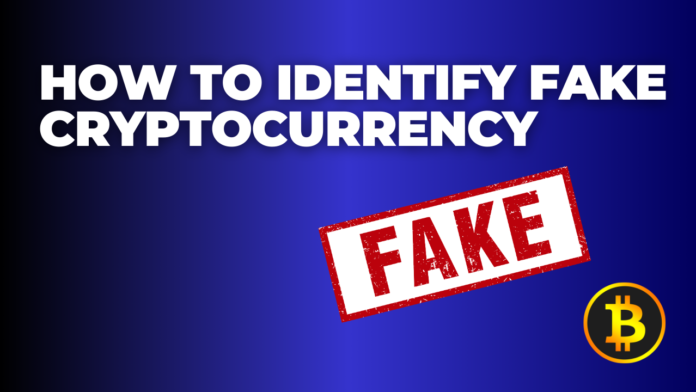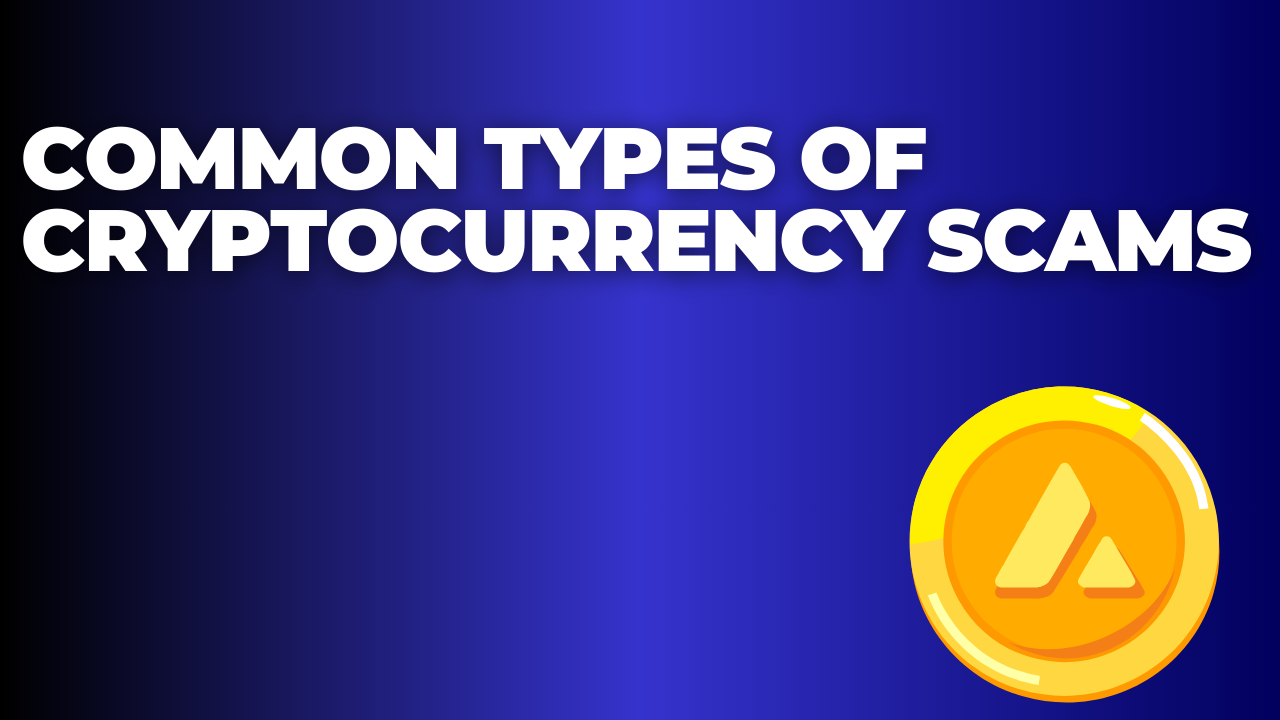Introduction
Cryptocurrencies have rapidly gained popularity in recent years, but with the boom comes an unfortunate downside: the rise of fake cryptocurrencies and scams. As digital assets become more mainstream, scammers have developed more advanced methods to abuse unnoticed investors. In this article, we’ll explore how to identify fake cryptocurrency and the steps you can take to protect yourself.
What are Fake Cryptocurrencies?
Fake cryptocurrencies are digital assets designed to deceive investors into thinking they hold value when in reality they are fraudulent. These scams often replicate legitimate cryptocurrencies in appearance branding and marketing making it challenging for newcomers to differentiate between genuine and fake assets.
Common Types of Cryptocurrency Scams
Scammers employ a variety of tactics to deceive potential investors from creating entire fake cryptocurrencies to running fraudulent Initial Coin Offerings (ICOs). Many schemes involve advanced websites, whitepapers and even social media influencers to create the illusion of legitimacy.
Why Fake Cryptocurrencies Are Rising
As the cryptocurrency market expands, so does the opportunity for scammers to take advantage of the hype. Many investors, drawn by the potential for high returns, fail to perform proper due diligence before investing, making them prime targets for fake cryptocurrency schemes.
Red Flags to Watch Out For
Unrealistic Returns
One of the biggest warning signs of a fake cryptocurrency is the promise of guaranteed high returns. Legitimate investments involve risk, and no cryptocurrency can offer a risk-free guarantee of exponential growth.
Lack of White Paper
A whitepaper is a document that outlines the technical details, goals, and roadmap of a cryptocurrency. Fake cryptocurrencies often lack a whitepaper, or the one provided is vague and lacks substance.
Unverified Team Members
Scammers may present a list of team members that are either nonexistent or have no verifiable presence in the crypto industry. Always research the team behind a cryptocurrency project to ensure they have credible experience.
Missing or Poorly Maintained Website
A poorly designed or outdated website is another indicator of a potential scam. Legitimate cryptocurrencies invest in their online presence and maintain transparency through their platforms.
The Role of Social Media in Crypto Scams
How Fake Cryptos Exploit Social Media
Social media platforms like Twitter, Telegram, and Instagram are often used to promote fake cryptocurrencies. Scammers leverage these platforms to create hype and urgency around their projects, encouraging users to invest quickly without proper research.
Examples of Scams Promoted via Social Media
Many fraudulent cryptocurrency projects have gained traction through social media influencers or bots that promote fake giveaways or airdrops. These tactics often involve promises of free cryptocurrency in exchange for personal information or small deposits.
How to Verify the Legitimacy of a Cryptocurrency
Researching the Founders
One of the most critical steps in identifying a legitimate cryptocurrency is researching the people behind the project. Ensure the founders have verifiable experience and a presence in the cryptocurrency space.
Checking the Blockchain for Transparency
Legitimate cryptocurrencies operate on a transparent blockchain. Use blockchain explorers to track transactions and verify the project’s activity.
Reviewing the White Paper
A genuine cryptocurrency will have a detailed and coherent whitepaper that explains its purpose, use cases, and technical framework. Be wary of projects with vague or overly complex whitepapers designed to confuse potential investors.
Common Fake Cryptocurrency Scams
Ponzi Schemes
Ponzi schemes involve promising high returns to early investors using the funds from newer investors. Eventually, these schemes collapse when there aren’t enough new investors to support payouts to earlier ones.
Pump and Dump Schemes
In pump and dump schemes, a group of individuals artificially inflates the price of a cryptocurrency by buying large amounts of it, then sells off their holdings once the price rises, leaving other investors with worthless tokens.
Initial Coin Offering (ICO) Scams
Fraudulent ICOs involve creating fake cryptocurrencies or projects to raise funds from investors. These scams often vanish once they’ve collected enough money, leaving investors with nothing.
How to Identify Fake Cryptocurrency Websites
Key Features of Scam Websites
Fake cryptocurrency websites often have telltale signs like poor design, broken links, and vague information about the project. Be cautious of websites with exaggerated promises or unclear details.
Website Authentication Techniques
Always verify a website’s authenticity by checking for secure HTTPS connections, reading reviews from trusted sources, and verifying whether the site is listed on legitimate cryptocurrency exchange platforms.
Reputable Crypto Exchange vs Fake Platforms
A secure exchange is vital for buying and trading cryptocurrencies. Fake exchanges may look legitimate but are often used to steal user funds or personal information.
Verifying Exchange Licenses
Always ensure the exchange you’re using is licensed and regulated by relevant authorities. Research reviews and ratings from credible sources before depositing funds.
Using Blockchain Explorers to Spot Fake Coins
How Blockchain Explorers Work
Blockchain explorers are tools that allow users to track transactions on a cryptocurrency’s blockchain. These tools can help verify whether a cryptocurrency is actively being traded or if it’s a fraudulent project.
Detecting Fake Cryptocurrency Transactions
Fake cryptocurrencies often have low transaction volumes or irregular patterns of activity. Use blockchain explorers to check for consistent transaction histories and activity.
How to Safeguard Yourself Against Fake Cryptocurrencies
Due Diligence Before Investment
Before investing in any cryptocurrency, always perform thorough research on the project, team and technical details. Verify all claims made by the project through independent sources.
Diversifying Crypto Holdings
One of the best ways to protect your investments is by diversifying your portfolio across multiple legitimate cryptocurrencies. Avoid putting all your funds into a single, unproven asset.
Case Studies: Examples of Fake Cryptocurrencies
Infamous Fake Coins and Their Impact
Many fake cryptocurrencies have made headlines over the years, causing significant losses for investors. Examples include projects like BitConnect and OneCoin, both of which collapsed, leaving investors out of pocket.
How to Report a Fake Cryptocurrency
If you encounter a fake cryptocurrency, it’s essential to report it to the relevant authorities. Websites like Cointelegraph and government agencies like the U.S. Securities and Exchange Commission (SEC) allow users to file reports.
Future of Cryptocurrency and the Fight Against Fake Cryptos
How Technology Can Detect Scams
Advancements in technology, such as AI and machine learning, are helping to detect and prevent cryptocurrency scams before they gain traction.
Blockchain’s Role in Securing the Crypto Space
Blockchain technology’s transparency and immutability make it a powerful tool in the fight against fake cryptocurrencies. By leveraging these features, investors can better protect themselves from scams.
Conclusion: Staying Safe in the Crypto World
Key Takeaways to Remember
As the cryptocurrency market continues to grow, so do the risks of fake cryptocurrencies. By staying informed, performing due diligence, and using trusted platforms, you can protect yourself from falling victim to these scams.
Steps to Protect Your Investments
Always research any cryptocurrency thoroughly before investing, diversify your portfolio and use secure exchanges to trade. By following these steps, you can mitigate the risks of fake cryptocurrencies and safeguard your digital assets.
FAQs
Q1 : What is a fake cryptocurrency?
A fake cryptocurrency is a digital asset designed to deceive investors by imitating legitimate cryptocurrencies. These scams often lack any real value or underlying technology.
Q2: How can I spot a fake cryptocurrency?
To spot a fake cryptocurrency, look for red flags such as unrealistic promises, lack of transparency no whitepaper, unverified team members, and poorly maintained websites.
Q3: What should I do if I encounter a fake cryptocurrency?
If you encounter a fake cryptocurrency, report it to regulatory agencies such as the SEC or other watchdog organizations to prevent others from falling victim to the scam.
Q4: Can blockchain technology help detect fake cryptocurrencies?
Yes, blockchain technology’s transparency allows users to track transactions and verify whether a cryptocurrency is actively being traded, helping to identify fake cryptocurrencies.

